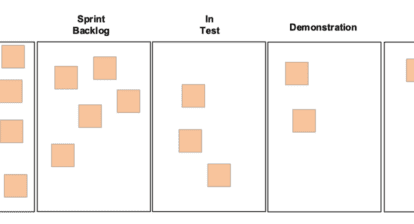 Success or Failure of a Project is a People Thing
Success or Failure of a Project is a People Thing
Although technology and software development tools are essential for most projects, it’s the leadership of a project that makes the difference between a project’s success or failure. Leaders must create a work environment that sets people up for success. I believe that for a productive work environment to be created, a project manager should have in mind, the following goals:
- Provide the essential training, processes, and tools: Employee productivity is at its highest when the team knows what to do and how to do it. Giving employees or teams the right foundational skills is critical to success. If this goal is obtained, it will be much easier to track and measure the progress of your projects.
- Encourage mentoring: This is a follow-up on the first goal. The reason why I am a good project manager is because the first company that I worked for as a financial PM, Fisher-Price Toys, had a formal mentoring program. I had an excellent senior mentor by the name of Arthur Gunther, who provided me with a strong foundation in project management and a sense of accomplishment. Regardless of whether an organization has a formal program for mentoring or not, the process of skill development needs to be established and pursued.
- Foster teamwork: The more participation is encouraged, the greater the likelihood that a project’s objectives will successfully be met. Treat others as you would like to be treated. It shows respect for the individual. Don’t be blinded by the ease of these words—there is precious treasure (or Golden Rule) here!
- Boost positive risk-taking: Having a risk-supportive environment that rewards risk and does not penalize failure can allow the imagined to become reality. Positive risks could even be listed in the project charter with their associated benefits. Regardless, they should at least be documented as part of a project’s lessons learned so they can add value to future projects. Remember, the movers of tomorrow are taking risks now.
Besides meeting the above goals and working towards a productive work environment, to increase your chances of success I also suggest that organizations need to develop one-page simple workbooks that will help them in predicting a project’s success. By researching their industry and related industries, they should find different ways of discovering their probability of success, review weak areas, if any, and/or cancel the project when it’s called for. Let’s look at some workbook examples in the following section.
How to Predict a Project’s Success
Countless studies over the last four decades point to similar findings. About 50% of projects undertaken will be completed late and/or exceed budget. Approximately 25% will be cancelled. The success of a project depends on people—not technology or tools. This fact crosses all industries, from manufacturing to financial services. The below workbook is intended to be used to perform a quick risk assessment. I hope you’ll be able to use this matrix to determine the probability of success on a current or new project. Anything less than 75% suggests that you could be headed for trouble.
You can add critical success questions that apply to your project. Be sure to add a corresponding success weight and recalculate. In the below table, fill-in your own numbers under “Your Project,” and do the calculations. Column “A” assumes the weight is constant for the questions, but, through your experience, you might change some of the weights you use over time.
How to Forecast the Success of Technology Projects
Considering how much and how rapidly technology has evolved since the start of this century, one would think the ability to implement successful enterprise projects would have improved at a comparable pace. According to a 2015 chaos report by the Standish group, it hasn’t. The study found that 29% of IT projects were successful, 52% were challenged, and 19 % failed. These numbers were about the same in 2011.
Because technology advances so rapidly (with significant revisions every 6 to 12 months), IT projects tend to have high degrees of uncertainty. This can cause changes in methodologies being used, high personnel turnover, and a lack of having standard benchmarks for evaluating a team’s abilities and skill levels. As I’ve said, a project’s success ultimately depends on people. The below workbook will help you perform a quick assessment to determine your chances of success. Note: the Oracle Upgrade is an example.
INSTRUCTIONS:
- Fill in your own risk numbers (0 – 5) under “Your Project – Risk Scale.” The higher the number, the greater the risk.
- Multiply your risk number by its corresponding “Success Value,” and enter the “Score” value for each reason in the last column.
- Add up the scores to get your Total Score and go to the bottom of the table to find your probability of success and the action that may be required.
Do you have any other ideas or workbooks on improving projected success for projects? I’d love to hear them in the comments below.










Gus Gronowski
Good Article. Column A in the first matrix has High = 5 listed twice. It should have Low = 1. Thanks